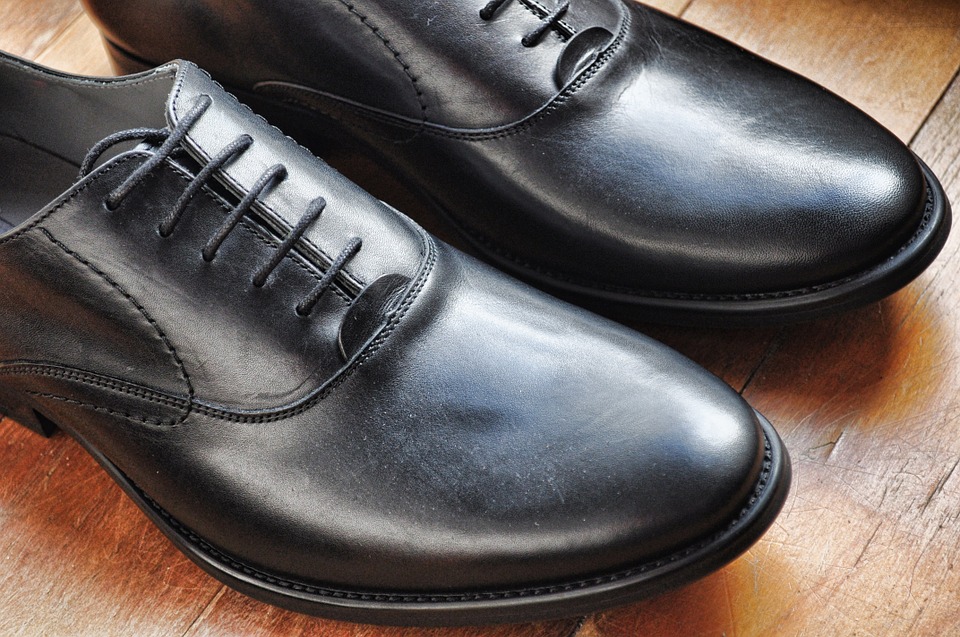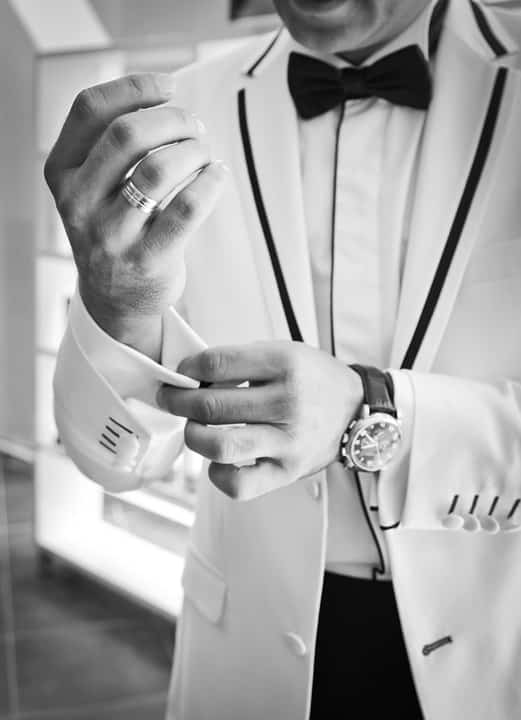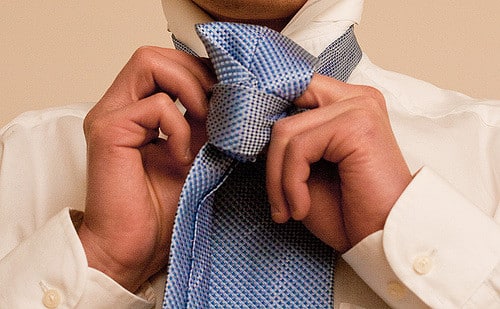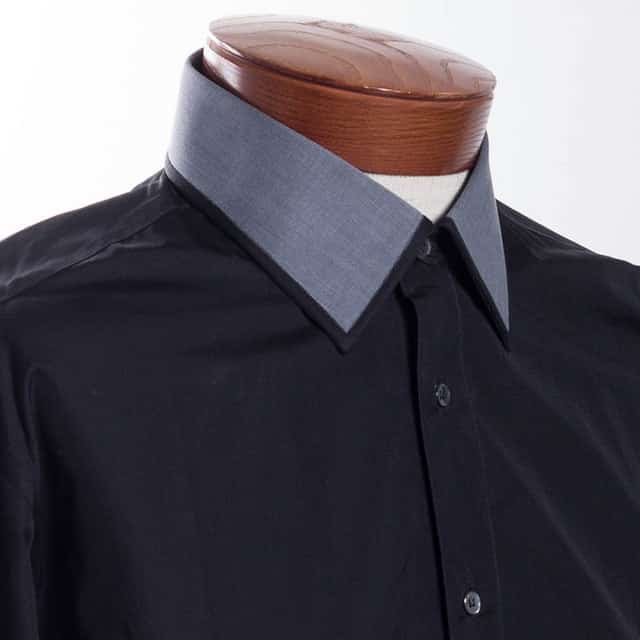There are certain “must-have” fashion garments and accessories that every man should own. If you have trouble putting together a stylish look, you should reevaluate your wardrobe to ensure that it has the following staples.
Black Oxfords
There’s no better choice for formal footwear than a pair of classic black leather oxfords. As shown above, they are simple, sophisticated, and visually appealing. And because they are black, you can wear them with just about any suit or formal outfit, assuming it doesn’t feature brown. This makes black oxfords a must-have staple for every man’s wardrobe.
Chinos
When you want to achieve a look that’s not too formal but not too casual, chinos are the answer. Not to be confused with traditional khakis, chinos are made of a lighter 100% cotton or cotton-polyester blend with a slimmer fit. A classic look is to pair chinos with a button-up dress shirt and tie. Or if you want to go a bit more formal, wear a blazer over your shirt. The versatility alone makes chinos well worth the investment.
Dark Indigo Denim Jeans
Of course, we can’t talk about must-have fashion items for men without mentioning dark indigo-colored denim jeans. Some men assume that jeans are only useful when worn for casual occasions, but this statement couldn’t be further from the truth. Whether you are running errands, going out to eat, or even attending business meetings, you can usually wear indigo jeans. Indigo has a slightly more formal appearance than light and/or faded jeans, making them an excellent addition to any man’s wardrobe.
Blazer
Why should own a blazer? Well, they are considered less formal than traditional sports coats and jackets, meaning they can worn for more occasions. A good blazer will allow you turn to instantly turn an otherwise dull outfit into a more vibrant and sophisticated look, while still offering a classic touch that’s easy on the eyes. Consider picking up a black blazer and adding to your wardrobe.
Solid Color T-Shirts
The old days of wearing t-shirts with corporate logos and tacky phrases are long gone (thankfully). Unless you’re a high school or college student, it’s generally best to avoid these styles of t-shirts. For a more “grown-up” appearance, stick with high-quality, solid-color t-shirts that match the rest of your outfit. The great thing about solid-color tees is that you can mix and match them your existing garments, creating new looks in the process.
References:
http://www.forbes.com/pictures/ehlm45igm/10-wardrobe-staples-every-man-should-have/
http://www.mensfitness.com/styleandgrooming/fashion/10-wardrobe-essentials-for-every-man




